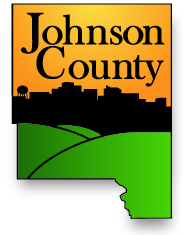If you suspect that a friend, family member or neighbor is displaying hoarding behavior, this page will assist you in gaining a basic understanding of the disorder, understanding when the Public Health Department can be involved, and learning about other resources you may find helpful.
Please note: In many situations Johnson County Public Health has no regulatory authority over hoarding situations, as individuals have the right to live the way they choose as long as it does not pose a threat to the public’s health. Please see the FAQ section for details on what JCPH can regulate and/or when JCPH (or another agency) can get involved.
Hoarding Definitions and Facts
(From the Hoarding Handbook by C. Bratiotis, C. Sorrentino Schmalisch & G. Stekette.)
Compulsive Hoarding
- Compulsive hoarding has three main features:
- The accumulation of and failure to discard a large number of objects- many of which may seem useless or of no value.
- Extensive clutter in living spaces that prevents the use of those spaces.
- Significant distress or impairment caused by the clutter.
- Hoarding is different from collecting, as collections are usually organized and of value. Hoarding is also not temporary clutter created by a recent move, renovation or inheritance of items.
- Hoarding interferes with everyday living and basic activities, such as cooking, cleaning, movement, and access to beds and/or bathrooms.
- Hoarding often leaves home occupants without vital services, such as electricity, heating/cooling, and water and plumbing.
- Squalor (rotting food, animal waste, etc.) and hoarding may occur together, but not always.
- Hoarding occurs in 2-5% of adults across all socioeconomic levels and typically begins in teenage years.
- Dangers of hoarding include: blocked exits, fire hazards, infestations, falling objects, lack of access to necessary home repairs, unsanitary conditions.
Animal Hoarding
- Animal hoarding, which may be a subset of hoarding, is defined by the following three features:
- The accumulation of a large number of animals (more than the typical pet owner), usually not for the purpose of breeding/sale.
- Failure to provide adequate living conditions for the animals (overcrowding, lack of sanitation, medical care or nutrition).
- Reluctance to place animals into adoption or care of others
- If you suspect animal hoarding, please contact your local animal control authority as JCPH does not regulate these issues.
Frequently Asked Questions
Q: I’m concerned about a friend, family member or neighbor who is a suspected (or confirmed) hoarder. What can I do or who should who I notify?
A: Each case presents different circumstances, requiring a customized approach. Some possible actions to take may include:
- Calling the Department of Human Services (319-356-6050) if you suspect that a dependent (child or elderly) is living in a home with unsafe/unsanitary hoarding conditions.
- Calling JCPH (319-356-6050) if there is a valid public health threat resulting from the hoarding behavior (see next question for details on valid public health threats).
- Expressing your concern directly to the individual or their family members if you feel comfortable doing so.
- Referring the individual to a mental health professional for voluntary treatment.
Please keep in mind that the person you are concerned about may not think they have a problem, may not wish to change, and/or may not be breaking any laws.
Q: When does hoarding constitute a valid public health threat?
A: To determine if a situation is a threat to public health it will be evaluated using the Johnson County Board of Health Nuisance Regulations. During an investigation, the following are considered: Proximity of condition to neighboring properties and persons; likelihood of public accessibility or exposure to conditions; likelihood of the condition transmitting disease or causing injury; likelihood of human to non-domestic animal contact; likelihood of significant contamination of the environment.
As each case is unique, contact JCPH to discuss the situation. Staff can provide guidance and may conduct a site visit to assess the level of threat to public health.
Note: In most situations Johnson County Public Health can only address hoarding situations that occur outside the home or in an unsecured home or structure. As this is a newly recognized disorder and our nuisance regulations were written before hoarding was more widely recognized, JCPH can only enforce nuisance regulations as they are currently written.
Q: I share a wall with someone who hoards (apartment, condo, townhouse). What can be done to address this issue?
A: If you are a renter, please contact your landlord. If you own your home, you or your homeowners association may have to take legal action if neighbors are being affected (property damage, reduced property values, etc.). If there is a valid public health threat, contact JCPH for more information on how we can be involved.
Q: My friend, family member or neighbor is trying to address their hoarding issue, but it’s taking forever. Can someone just go in and clean everything out?
A: Johnson County Public Health does not perform these services. Additionally, research shows that quick “clean ups” are not effective in treating the disorder, and will result in the individual having more severe hoarding behavior in the future. The best course of action is mental health treatment, organizational coaching, and having the individual be active in the cleanup process, all of which takes time.
Q: What are some resources where I can learn more about hoarding?
A: The examples below can serve as a starting point to further your understanding of the disorder and treatment options. You may also want to consult a mental health care provider for more information.
Websites
- The International OCD Foundation - Hoarding Center website: http://www.ocfoundation.org/hoarding/
- Resources for Families and Children of Hoarders: http://www.hoarders.org/f-c.html
Books
- Digging Out: Helping Your Loved One Manage Clutter, Hoarding, and Compulsive Acquiring by Michael A. Tompkins and Tamara L. Hartl. Published in 2009.
- The Hoarding Handbook by C. Bratiotis, C. Sorrentino Schmalisch & G. Stekette. Published in 2012.
